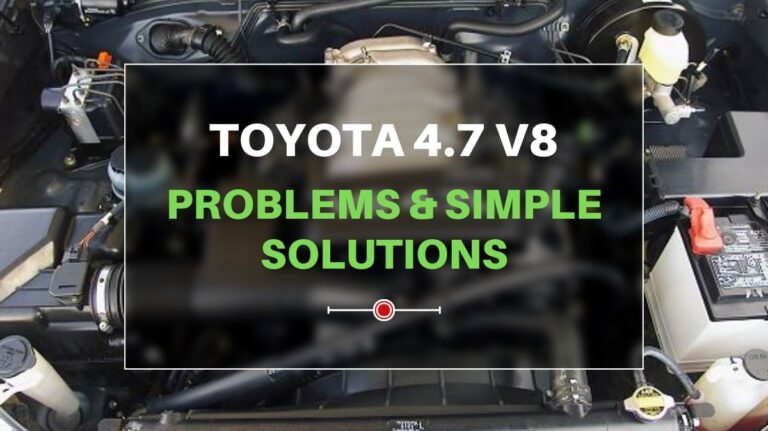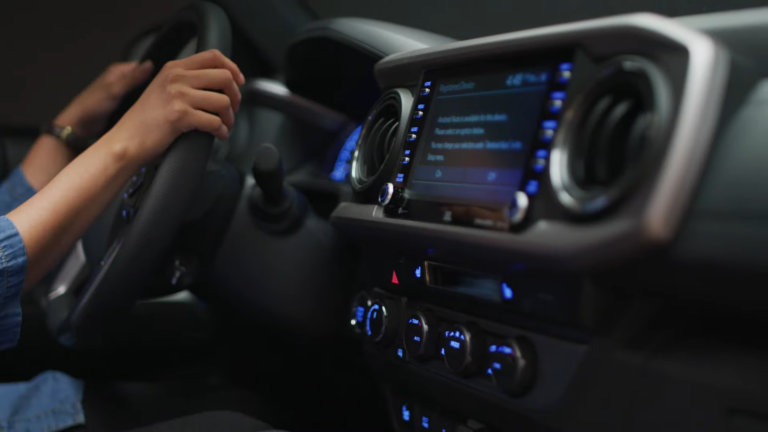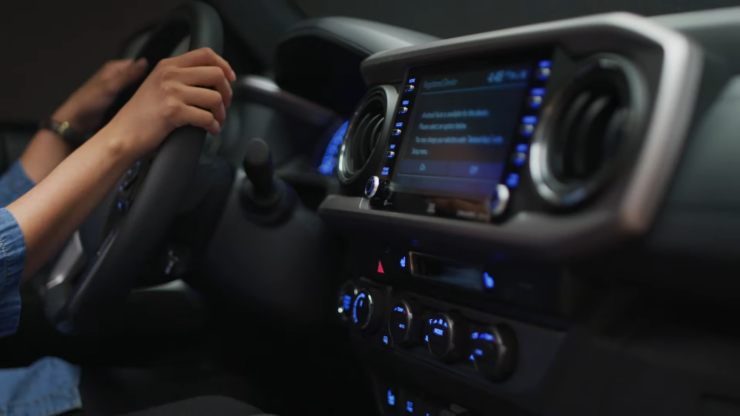Toyota 4.7 v8 problems are issues we often come across using the engine. The 4.7 v8 has been with us since its first introduction in 1989 until mid-2013.
It has served incredibly well, delivering incredible power to our trucks and SUV vehicles.
But even with its exceptional performance among other engine types of its generation, we will have to overcome problems to position our Toyota 4.7 v8 engine for more outstanding performance.
So, if you have been having issues with your 4.7 v8 engine, then make sure you read to the end to see the problems that resonate with you and the solutions suggested accordingly.
Toyota 4.7 V8 Problems: UZ Engine Overview
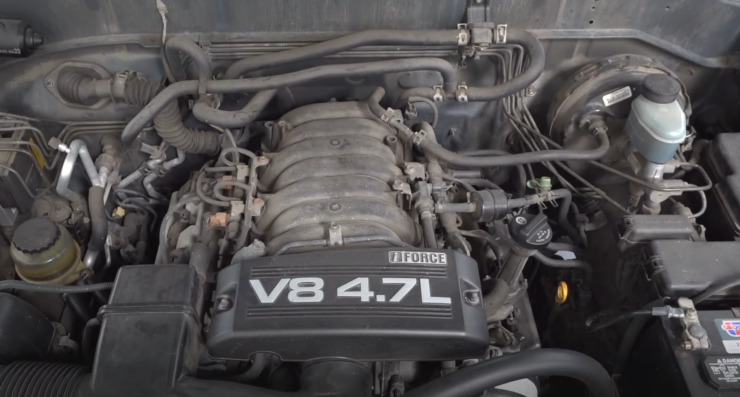
1uz vs. 2uz vs. 3uz
The Toyota 4.7 v8 or 2UZ-FE is a class of gasoline-powered engines with a 32-valve quad-camshaft and v8 piston. It has had different generations since its first production.
They include 1UZ, 2UZ, and 3UZ. For over 24years, this engine class has been a reliable source of power to many vehicles.
Still, it performs strongly against odds even though no new production of the 2UZ-FE types has been produced again since 2013.
The production stopped with the Toyota Crown Majesty 1-FOUR, 3UZ-FE.
1UZ Vs. 2UZ Vs. 3UZ
The 1UZ, 2UZ, and 3UZ are the first, second, and third generations of the Toyota 4.7 v8 engine. They have the same design and dimensions but vary in several ways.
While the 1UZ and 3UZ are made with an aluminum block cylinder, the blocks of the 2UZ were iron-casted.
The iron-casted material used for the 2UZ blocks gives the other two generations more excellent reliability and cost advantage.
However, the iron material caused the 2UZ to gain a payload which could be of disadvantage to the vehicle as it consumes more fuel.
Another good side of the 2UZ is the increased stroke and bore with a 900 valve angle, a 21mm bank offset in the cylinder, and a 105.5 bore pitch in its design. The three-generation engine comes with a steel crankshaft.
While 1UZ and 2UZ have eight counterweights and only four journals, the 1UZ has six journals.
But they also have a forged and sintered rods used for connections with aluminum alloyed fitted piston, upon which was the coat of tin, a technique used to cut friction to the barest minimum.
There are four valves in each cylinder, and they all have an intake and an exhaust camshaft, respectively.
The 1UZ, 2UZ, and 3UZ have the same camshaft orientation, with a timing belt-driven intake camshaft. At the same time, the exhaust is driven by an assembly of gears.
The 1UZ and 2UZ have similar valve-train alignments and dimensions. The Toyota 4.7 v8 engine also has steel valve filters which require regular adjustments.
Although the earliest models of the 2UZ v8 engine were designed with aluminum material in the intake manifolds, the v8 engine uses two gaskets made of metal and placed individually between the intake manifolds and the top-cylinder to control heat within the cylinders and their environment.
The previous version of the Toyota 4.7 v8 engine had the traditional throttle body, but the newer version started carrying an electronically controlled throttle.
The engine has a fuel injector with an air meter to tell the intake amount and air-fuel (two) ratio and sensors that trigger the meters.
The 1UZ, 2UZ, and 3UZ are equipped with the Toyota type of Direct Ignition System and knock sensors, including an electronic spark plug technology to manage ignition timing and acts to avoid hitting.
Features of Toyota 4.7 V8 (2UZ-FE) Engine
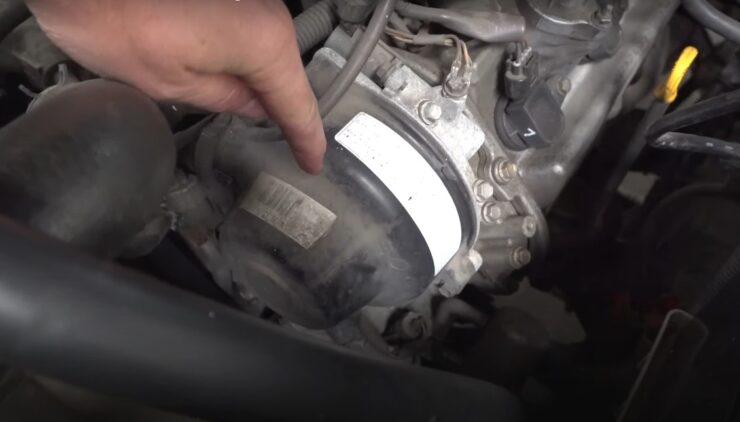
The features or parts which make up the Toyota 4.7 v8 (2UZ-FE) to bring about its efficiency and, of course, their functions include:
Pistons
The piston inside the cylinder goes up and down in compression or exhaustion due to fuel-air intake. The piston acts in response to the expanding gas in each cylinder on the engine block, and it does so in a coordinated manner. There are eight pistons on the Toyota 4.7 v8 engine block.
Cylinders
The cylinders are designed to house each piston and provide the vacuum that allows the piston to go up or down in a coordinated manner.
Valves
The valves serve as an outlet of used fuel or inlets of un-spent fuel. The valve opens and closes in a defined series. The open actions of the valve draw in fuel. When combined with air and ignited inside the cylinder, it would cause the piston to move downward due to the expansion of the gas.
This immediate action happens after the fuel is burnt and another valve opens to release the waste gas from the cylinder into an exhaust. There are four valves at the top of each cylinder of the Toyota 4.7 v8 engine.
Ignition system
The ignition system comprises the ignition coil and the iridium spark plucks. It is the engine electrical power supplier, and it works to provide the currents needed to produce the spark during the air-fuel ignition.
Camshafts
Camshafts responsibility is opening and closing the valves to allow the suction of fuel and air into the combustion chamber in the cylinder. It is designed to open one valve or multiple valves, and it closes the other valve simultaneously. And air-fuel comes in as the exhausted gases are expelled from within the chambers during the opening and closing of valves.
Fuel injectors
The fuel injector acts just as its name implies and is responsible for the fuel suction into the combustion chambers. The injector collects fuel from the tank through the fuel pump and sends it into the combustion chambers.
Gaskets
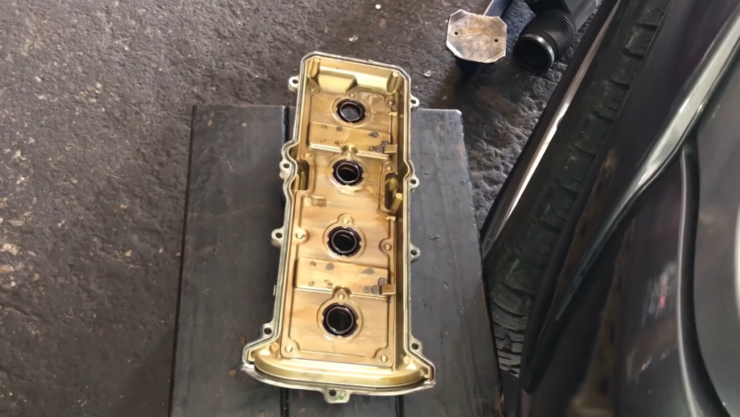
The gaskets serve to seal spaces between two joining parts. There are different gaskets on the Toyota 4.7 v8 engine. Still, they have the same and unique purpose. The gasket at the top between the top cylinder and the engine block prevents the air leakage resulting from the tiny gaps between it.
Sensors
Sensors are computer devices attached to the engine, and they use data collected to help us have better management of the engine.
Throttle
The throttle is connected to the injector, and actions of the throttle can either increase the fuel intake into the combustion chamber. And as a result, the engine power is increase.
Crankshaft
Unlike the camshaft, the Toyota 4.7 v8 engine’s crankshaft converts all actions within the cylinder into rotational motion. The connections rods hold firm the crankshaft and cause it to turn at high power.
Connecting rod
Connecting rods is responsible for connecting the pistons to the crankshaft, and it transmits the upward and downward action of the piston to the crankshaft, which causes it to rotate.
Timing belt
The timing belt coordinates the rotary motion of the camshaft and crankshaft. Their actions open and close the valves properly to allow the intake and exhaust of gases.
Water pump
The water pump’s function is to pull water from the radiator and circulate in the engine, cooling it in the process.
Supercharger
This supercharger compresses air that comes into the combustion chamber by increasing its density. It does this increase in air density to bring about efficient gas combustion in the chamber.
Specifications of Toyota 4.7 V8 Engine (2UZ-FE Spec)
| Items: | Specifications: |
| Manufacturer | Toyota |
| The material used for cylinder construction | Cast iron |
| Type of fuel | Gasoline (PMS) |
| Engine configuration | V-shaped |
| Number of cylinders in the engine block | 8 |
| Number of valves per cylinder | 4 |
| Layout of valve-train | DOHC |
| Dimension of Bore | 94.0mm |
| Dimension of stroke | 84.0mm |
| Combustion type | internal |
| Internal engine combustion type | Natural air and four-stroke engine |
| Ratio of compression | 9.6:1 |
| Power | 230-232 horsepower (hp) |
| Firing order | 1-8-4-3-6-5-7-2 |
| Torque | 300-311 ib-ft |
| Engine oil weight | 5W-30 |
| Engine oil capacity | 6.4 liters |
| Overall engine weight | 562 Ibs |
| Frequency of oil change | Every 12000km |
Compatible Toyota Cars for 2UZ-FE Engine
The Toyota 4.7 v8 (2UZ-FE) engines are compatible with several cars and trucks. And the types of Toyota cars/trucks they are compatible with include:
- Lexus GX 470
- Tundra(s)
- Lexus LX 470
- Land Cruisers
- 4runners and
- Sequoia(s)
Common Toyota 4.7 V8 Problems & Solutions
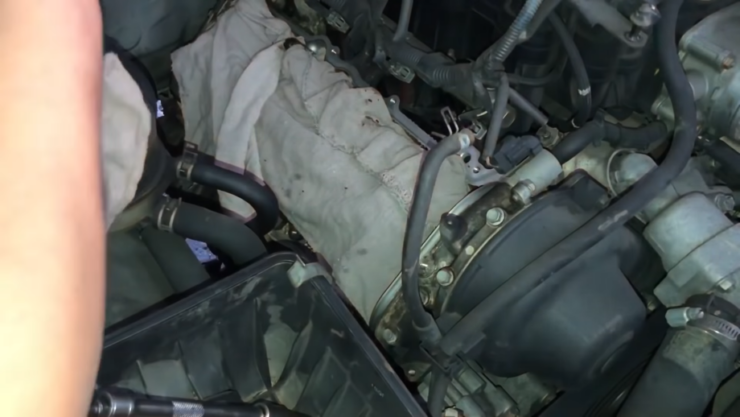
The Toyota 4.7 v8 engine poses several problems that we will see and ways to remedy the issues.
01. Weak Connecting Rod Problem
problems of weak connecting rods are not familiar with all the Toyota 4.7 v8 engines. But it is most prevalent in the 2UF and 3UF versions. The rods are surprisingly thinner compared to the first generation of the 4.7 v8 engines. The manufacturers made it more delicate to cut down on the weight ratio probably. After all, it is not a good idea because it sets the connecting rods for breakage when the engine power increases.
Solution
- Go for routine maintenance.
- Replace the thinner connecting rods with thicker ones. Probably the thicker types from the 1UZ generation of the Toyota 4.7 v8 engine.
02. Two-bolt Main Caps Problem
another problem most familiar with the Toyota 4.7v8 engine is the issues with the two bolts on the piston’s main cap, which could barely stand the engine’s high horsepower. When the 4.7 v8 engine goes higher in power, the bolt easily breaks off or pulls out.
Solution
- See an expert help you with a replacement of bolt that has higher quality.
03. Cracking Exhaust Manifold Problem
there are often cracks around the exhaust flanges. It is the most common problem with the 4.7 v8 engine. It is sometimes called the exhaust headers. The crack is due to the design flaw where the cats were moved too close to the manifold to control emission. These cracks are no problem in the earlier stage, but as the exhaust gets hotter, the damage expands, leading to severe issues.
Symptoms
- some ticking sound
- exhaust fumes leak out, and you perceive it
- it triggers the check engine like
Solution
The cracks can be fixed in two ways: One is a temporary fix, and the other is a permanent remedy.
- Use filling substances to fill up the cracked area (temporary)
- Weld a thick metal plate over the crack region (temporary)
- Replace the exhaust (permanent)
04. Timing Belt Problem
as we know, the timing belt synchronizes cranks’ movement, which allows the valves to open in a coordinated manner. However, the Toyota 4.7 v8 comes too with the timing belt issues. And when this issue arises, it becomes difficult to turn on the ignition, and it is so because the crank and the camshaft can’t open and close the valves as they should. Therefore there can’t be an ignition because no fuel to burn in the combustion chamber
Symptom
- Irregular engine noise
- Inordinate firing
- Triggered check engine light
- Engine malfunction
Solutions
- Although in replacing the timing belt, you will also have to replace the water pump because they go together
- Follow maintenance routine according to the engine guide and replace the timing belt when due.
05. Water Pump Problems
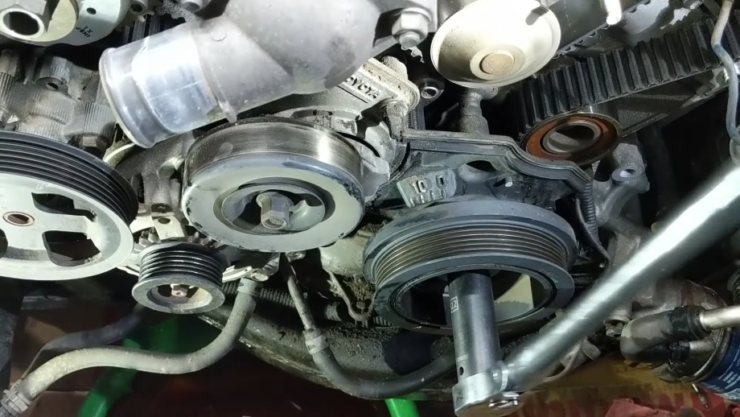
for the Toyota 4.7 v8 engine, water pumps do not pose much of an issue unless, for a preventive purpose, we have to change it regularly. But it develops minor problems like leakage, and sometimes there could be blockage which may pose a severe threat to the timing belt. That is why we often change the timing belt and water pump together to avoid minor issues that could lead to a bigger one.
Symptoms
- Engine overheating
- leakage
- Loss of engine coolant
Solutions
- use a sealing substance to seal off the leaking parts
- visit an expert to help you with a replacement if it becomes critical
06. Discontinued Supercharger Problem
The Toyota manufacturing company has discontinued the supercharger feature in their design, which means subsequent vehicles to come after the stoppage will have no supercharger. However, the company has modified other features to compensate for the discontinued supercharger and features like improved exhaust. The company’s reason for the removal was cost, but they are available in auto parts stores.
Solution
- if you want to make a new purchase of the 4.7v8, then go for improved versions with an enhanced cooling system
- if you would love to have one on your Toyota yet, then you can buy from auto part stores and let a professional fix them for you
07. Low on displacement Problem
Over time, the Toyota v8 engine starts developing low on displacement issues. And this means less power as a result of the engine’s low fuel consumption in the cylinder.
Solution
- Always follow the maintenance routine of the engine
- And always take the vehicle to a professional for service when it is due.
2UF-FE Reliability
The Toyota 4.7 v8 (2UF-FE) is very reliable compared to other engine choices, and it gives incredible horsepower for trucks and SUVs and has greater longevity. However, there may be few common issues with the 2UF-FE engines, but that does not limit their power and dependability, especially when you take the maintenance routine seriously.
Pros and Cons of Toyota 4.7 v8 Engine
- Tt delivers an incredible power output
- Very reliable
- It comes with a maintenance guide
- It comes with several issues, and the most significant among them is the crack in the exhaust manifold
- It would cost pretty much to replace the supercharger if your engine didn’t come with one.
FAQs
How good is the Toyota 4.7 v8 engine?
The Toyota 4.7 V8 engine is generally regarded as a reliable and well-performing engine. It was used in various Toyota models, including the Tundra and Land Cruiser, from the early 2000s until 2009. The engine has a horsepower output of around 270 and a torque output of around 330 lb-ft, making it a powerful option for heavy-duty tasks such as towing and hauling.
One of the key strengths of the 4.7 V8 engine is its durability. It is known for its longevity and ability to withstand heavy use without breaking down or experiencing major mechanical issues. It also has a reputation for being relatively easy to maintain and repair, with parts readily available and affordable.
For how long can I use my Toyota 4.7 v8?
The longevity of a Toyota 4.7 V8 engine largely depends on how well it is maintained and how it is driven. With proper care and maintenance, these engines can last well over 200,000 miles. However, if the engine is not maintained properly or driven aggressively, it may experience issues such as premature wear and tear, overheating, and other mechanical problems that can shorten its lifespan. It is important to follow the manufacturer’s recommended maintenance schedule and address any issues promptly to ensure the longevity of your Toyota 4.7 V8 engine.
Does the Toyota 4.7 v8 engine come with a timing belt?
Yes, the Toyota 4.7 V8 engine comes with a timing belt. The recommended replacement interval for the timing belt on this engine is every 90,000 to 100,000 miles, or every 6 to 7 years, whichever comes first. It is important to follow the manufacturer’s recommended maintenance schedule to ensure the longevity and reliability of your vehicle’s engine.
Can I change the timing belt even before I cover the required mileage?
Yes, it is recommended to change the timing belt before the recommended mileage interval if the timing belt shows signs of wear or damage. It is better to be safe than sorry, as a broken timing belt can cause serious engine damage and result in costly repairs.
Additionally, some mechanics may suggest changing the timing belt earlier as a preventative measure, especially if the vehicle is driven in harsh conditions or experiences extreme temperature fluctuations.
Ultimately, it is important to follow the recommendations outlined in your vehicle’s owner’s manual and consult with a trusted mechanic to determine the best course of action for your specific vehicle.
Verdict
We have seen a lot about the Toyota 4.7 v8 engine. Even though it has some drawbacks, it scores very well generally. The engine truly serves the purposes for which it is built. It was built for cars and trucks to offer power to help them do more challenging jobs, and they have lived to it. They are reliable and will continue to give you appreciable performance as long as you keep routine maintenance.
Related Posts:
- Toyota 2.4 Engine Problems & Easy Solutions - Keep…
- Is It Time to Upgrade? 5 Signs You Should Sell Your…
- How Long Does an Oil Change Take? - From Quick Pit…
- How Long Does It Take to Rotate Tires? - Saving Time…
- Toyota 3.0 v6 Engine Problems & Possible Easy…
- How to Fix a Flooded Engine - DIY Guide & Easy Instructions

